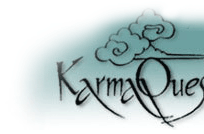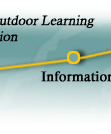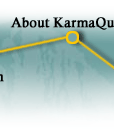|
Building upon our highly successful Quest for the Snow Leopard in Ladakh, KarmaQuest in partnership with the Snow Leopard Conservancy has added a second snow leopard trip to our portfolio.
This ten-day Jomolhari Base Camp/Bhonte La loop trek set against stunning Himalayan scenery coincides with the annual Jomolhari Mountain Festival held in the best snow leopard habitat in Bhutan. If you are going to see a snow leopard in Bhutan, it is likely to be here.
Other highlights of the trip include:
• Cultural excursions before and after the trek including a hike to the famous clifftop Taktsang (Tiger's Nest) Monastery, and visits to excellent museums.
• Ten days on trek, attendance at the Jomolhari Mountain Festival, and scouting for snow leopards with local experts. The trek is considered strenuous
• Meeting with Bhutan’s snow leopard conservationists and contributing to the cat's protection.
And in case you don't see an actual snow leopard, you’ll have opportunities to talk with Bhutanese yak herders and conservation scientists who have seen and photographed the cats in the wild, and who are actively engaged in documenting its whereabouts and protecting its habitat.
Here's what one trip member, Caroline, had to say about an earlier trip: What could have been better!!?? The food was great, staff were wonderful, horses well behaved, tents always up by the time we staggered into camp. It was truly wonderful." Caroline Gabel, The Shared Earth Foundation and Snow Leopard Conservancy Chairwoman
You can also read a previous trip member's blog about the trip.
Itinerary
Day 1: Arrive in Paro: Visit the National Museum for an introduction to Bhutan's impressive natural history, and time permitting (depending upon the flight arrival time) the Paro Rinpung Dzong with its spacious upper courtyard and prayer halls, and the Khichu Lhakhang, one of the oldest temples in Bhutan. Overnight in a hotel in Paro.
Day 2 and 3: A warm up hike to Taktsang Monastery (Tiger’s Nest) and an acclimatization day at Chele-la: Hike to Bhutan’s most sacred site where Guru Rinpoche (who introduced Buddhism to the Himalaya in the 8th century) once landed on the back of a flying tiger. Tucked high into the cliffside its cave-like rooms are adorned with Buddhist art and alters, well attended by Bhutanese pilgrims. On the other day (TBD), take a drive to Chele La, at 12,000 ft to look for high altitude birds and wildlife and to acclimatize to elevation before starting the trek. Overnight in a hotel in Paro.
Day 4: Begin the trek: Drive up-valley to the trailhead (9,480 ft) and start the trek with a gradual ascent following the Paro Chhu (river) through a thick forest of oak, bamboo, rhododendron, and ferns. After lunch, continue hiking to a meadow camp (10,000 ft). Camp in tents. Hiking time: 4-6 hours.
Day 5: On Trek: Continue the trek following the Paro Chhu. The valley of Soe Yaktse opens up to the west with several large snowy peaks visible at a distance. Set up camp at Heyshi Thangkha (13,100 ft), a winter pasture for local herders' yaks. Camp in tents. Hiking time: 5-7 hours
Day 6: Trek to the Mountain Festival: Trees become sparser as the landscape widens into patches of alpine meadow and views of snowy Mt Jichu Drake, Tsherimgang and Jomolhari appear. Settle in for two nights of camping near Soe Yutoed village (elevation: approx 13,400 ft). Hiking time: 3-4 hours. Attend half day at the festival.
Day 7: Attend the Mountain Festival: Today you'll join local villagers, yak herders, dignataries, and school children in this annual celebration of mountain cultures and the snow leopard. The festival and your being there will help reinforce the importance of snow leopard conservation. All day long, participants play traditional games such as tug of war and horse racing, and demonstrate cultural dances and traditions. Camp near the festival site.
Days 8 and 9: Leave the festival and trek toward Tsho Phu or a high camp: You’ll pass by Jomolhari Base Camp and head up a steep incline, rewarded with fantastic views of familiar peaks. Trace the Tsho Phu Chhu to its origin, the Tsho Phu lakes (tsho means lake). There are good chances of spotting blue sheep on these slopes, and where there are blue sheep, there are often snow leopards. Local herders report seeing snow leopards near here and will help you watch for them on the ridges and slopes. Camp between 14,000-15,000+ ft. Hiking time: 4-6 hours
Day 10: Cross Bhonte La and overnight near a village: From the high camp, climb a bit further to cross Bhonte La (pass), at 16,040 ft, the highest point on the trek route. Continue down the other side, watching for blue sheep and dazzled by the stark high altitude scenery. Overnight in a village, camping. Hiking time: 5-6+ hours.
Day 11: Experience village life of a yak herder: Camping near a village, you'll have a chance to see how subsistence farmers and herders live. These hardy people supplement their farm income by keeping yaks, which are occasionally killed by snow leopards. But their faith in Buddhism keeps them from retaliatory killing of the cats. You'll hear their stories and visit a family home on this rest day. Camp overnight near the village.
Days 12 and 13: Enjoy the last two days of trekking -- almost all downhill!: Leave this picturesque valley and follow the drainage of the Dhumzo Chhu to the Paro Chhu and downstream to the trailhead at Guwitshawa, camping one night en route. Drive to your hotel in Paro for a welcome hot bath and soft bed. Hiking time: 5-6 hours each day. Overnight, Paro (hotel).
Days 14 and 15: Sightseeing in Thimphu: After a leisurely morning, drive one hour to the capital city, Thimphu. Visit the Takin Reserve, where this ungainly creature -- Bhutan's national animal -- is often visible at close range inside an enclosure. Drive to a hilltop where a giant Buddha statue overlooks Thimphu town. And visit several excellent museums as well as the Memorial Chorten. Visit with environmental leaders to learn more about wildlife conservation and the country's commitment to a sustainable future. Overnight in a hotel in Thimphu.
Day 16: Depart Paro: Drive an hour to Paro and sightsee or spend some time shopping, time permitting, before your departure.
Optional Extensions: Extend your stay in Bhutan to see the magnificent Punakha Dzong, a half-day drive from Thimphu. Overnight near Punakha, adding two nights to your trip.
Minimum group size: two persons
Trip Cost:
From $7,350/person, depending upon the group size
Single supplement: $625/person
Due to the limited space on flights in and out of Bhutan, we encourage you to sign up for the trip as soon as possible. Trip deposit date TBD. Bookings will be accepted after that, space permitting.
The cost includes:
• Hotel/guesthouse/tent accommodations on twin-sharing basis
• All meals in Bhutan (breakfast, lunch, and dinner)
• Farewell Dinner
• All land transportation mentioned in the itinerary
• Services of Bhutanese English speaking guide
• Entry fees to monasteries, museums and dzongs mentioned in the itinerary
• Full trekking services, Park entrance fees, and ponies for luggage on trek
Trip cost does not
include:
•
International and regional air fares (US-Paro-US)
• Personal expenses such as communications, laundry, camera fees, etc
• Transportation and activities not included in the itinerary
• Alcoholic beverages and drinks
• Travel insurance
(recommended)
• Medical and emergency evacuation insurance (mandatory),
• Personal medical kit
• Bhutan visa fee ($40),
• Gratuities to hotel and airport staff, local guide and drivers
• Horses for personal riding on trek
• Donations to monasteries and social service programs
• Any other services not mentioned as included above.
Conservation
Donation:
A tax-deductible donation of $500 (not included in the trip price) paid to the Snow Leopard Conservancy helps support snow leopard conservation, research, and ecotourism development programs.
Top
|











